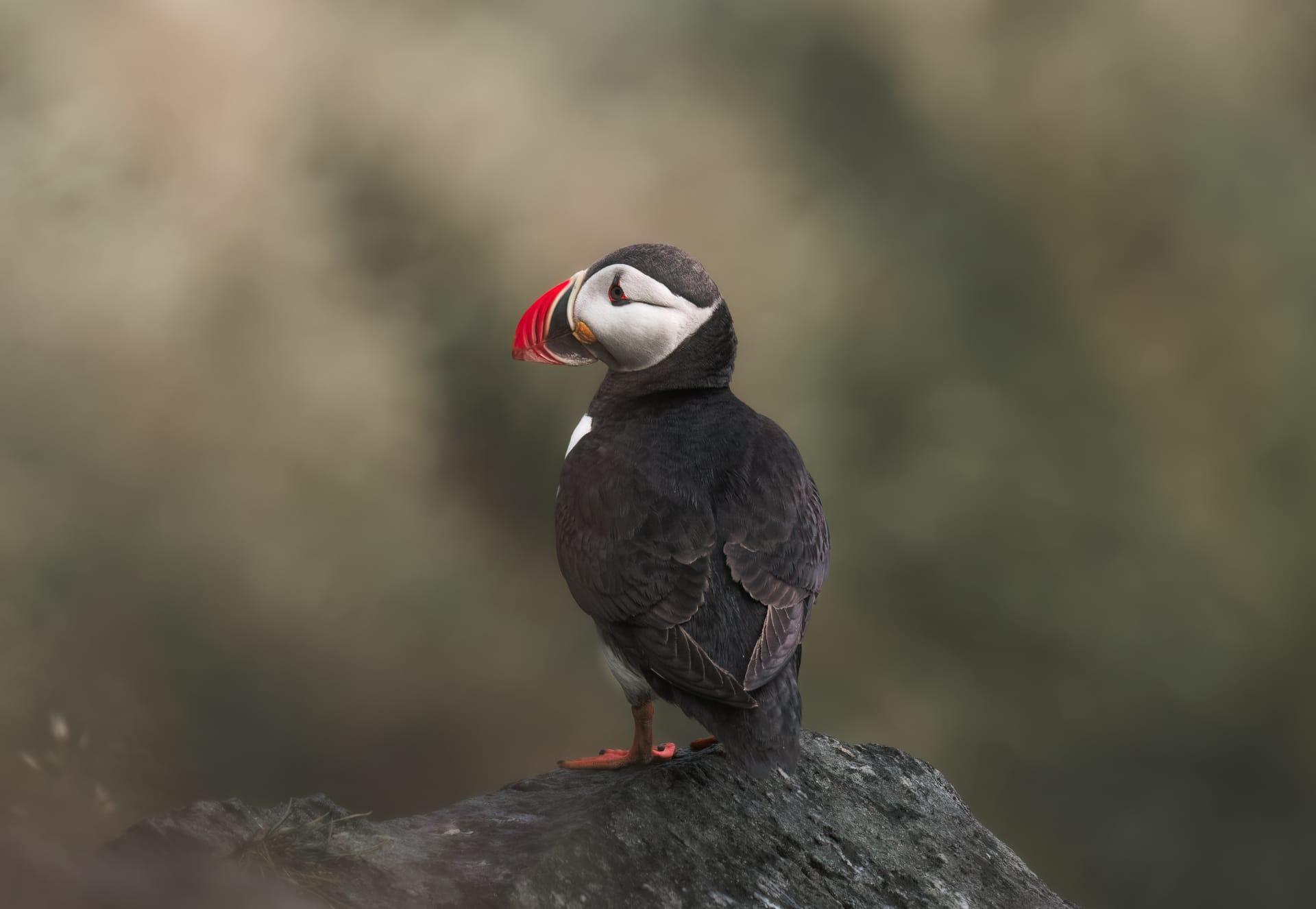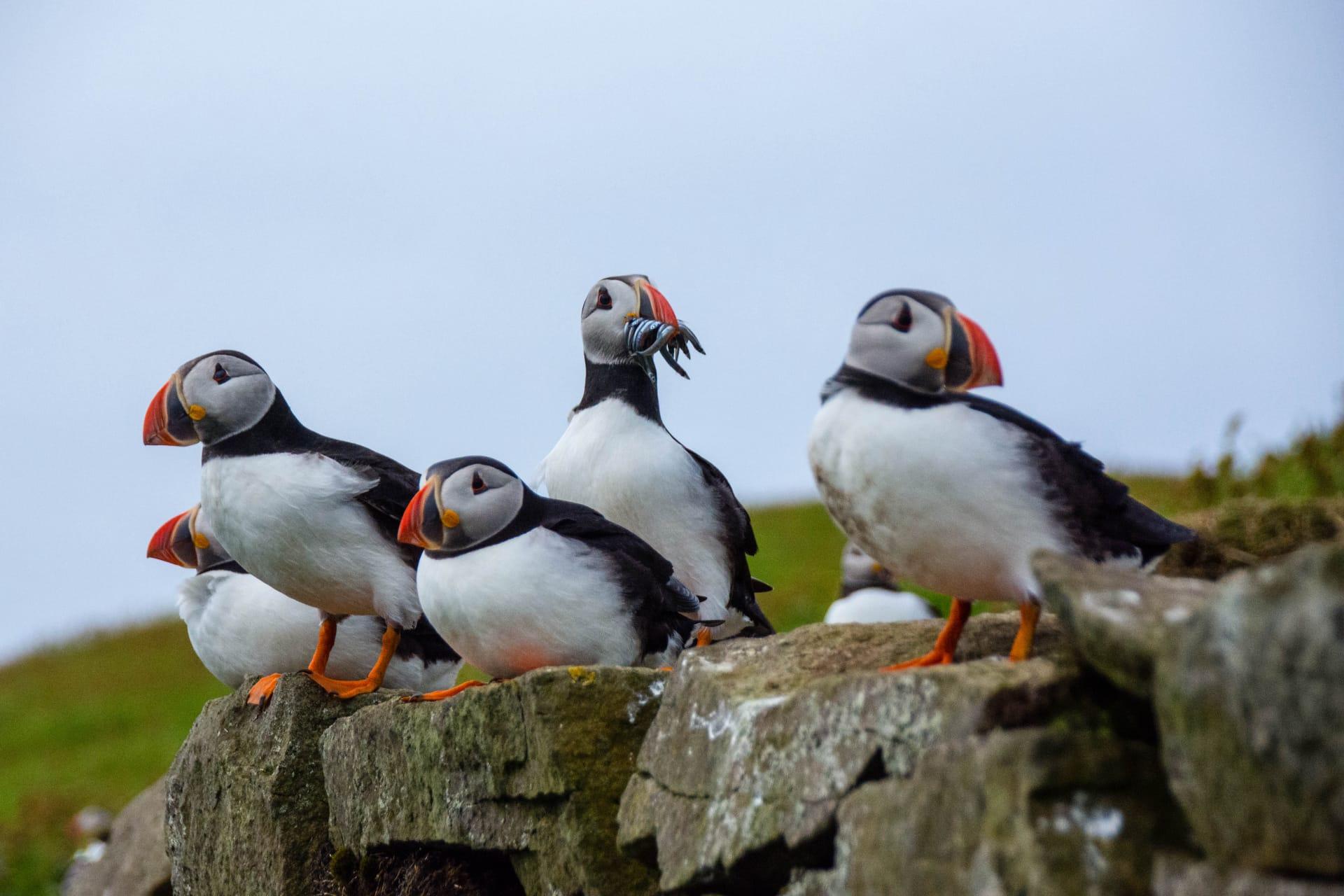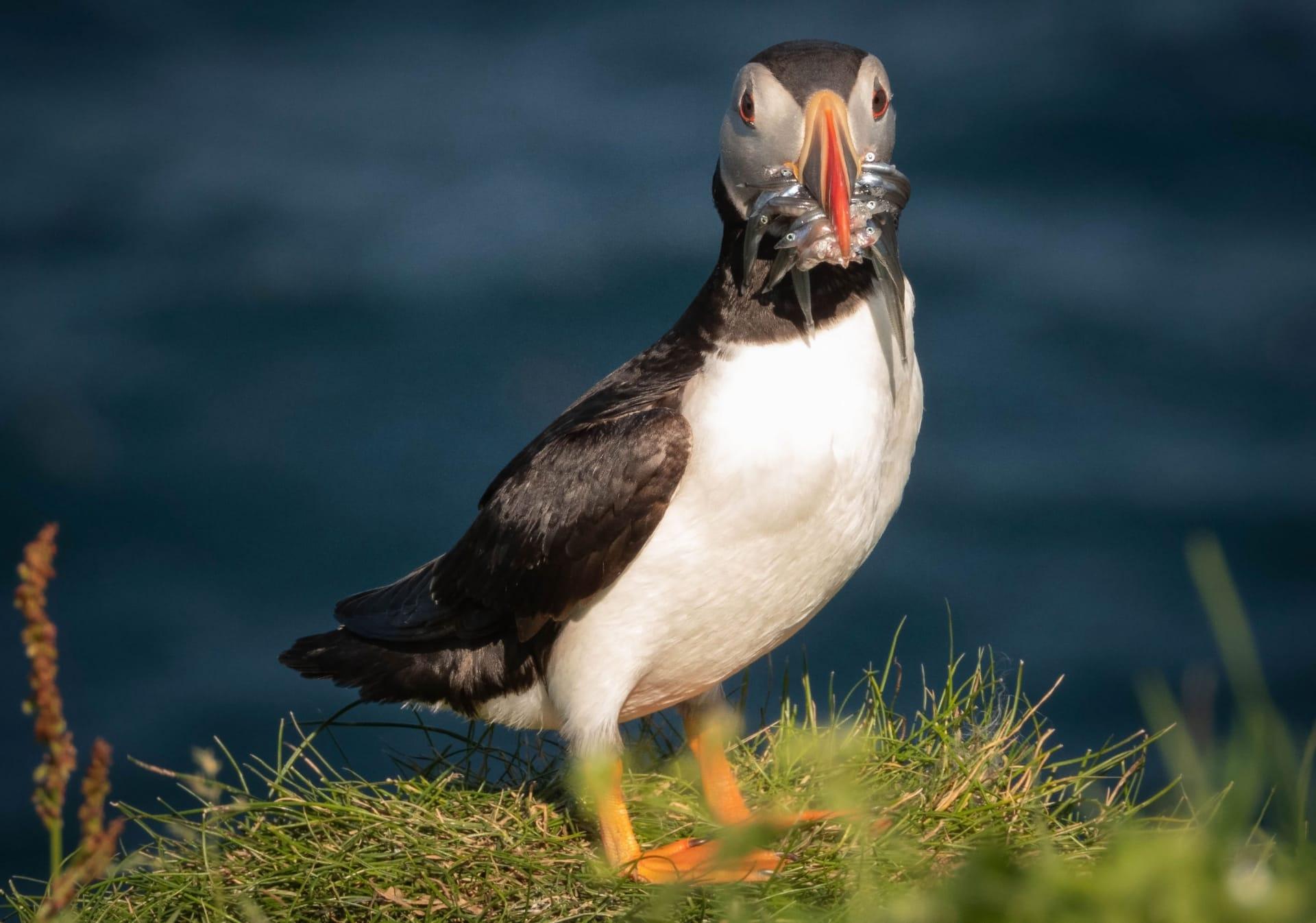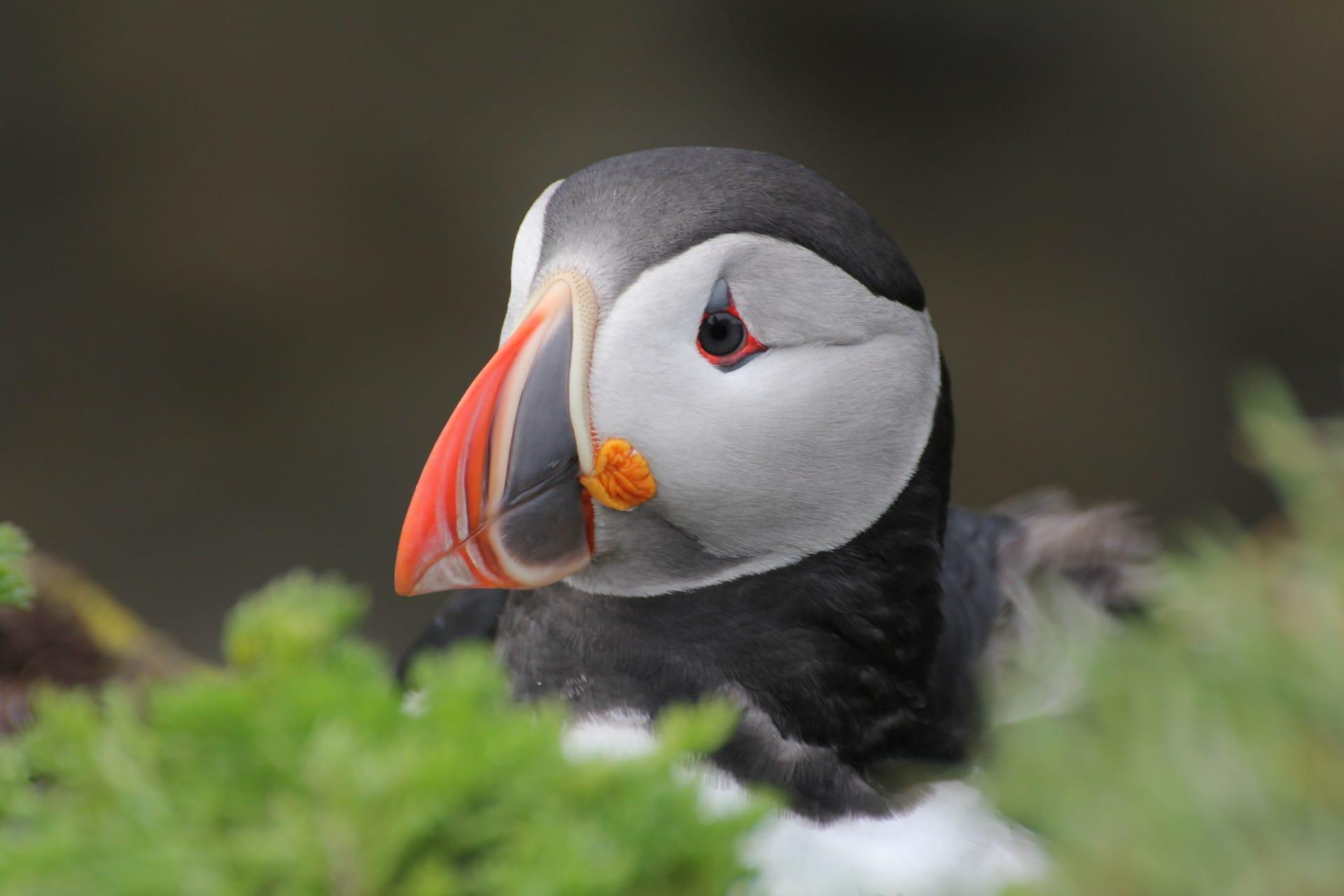1
Puffins, with their colorful beaks and waddling walk, are often called the "clowns of the sea." These charming birds have a beak that changes color during the year. In winter, their beaks are a dull gray, but as the breeding season approaches, they transform into vibrant orange, blue, and yellow hues. This seasonal change is not just for show; it plays a crucial role in attracting mates. Studies reveal that puffins with brighter beaks are more successful in finding a partner.
Another fascinating aspect of puffins is their incredible diving ability. They can dive up to 60 meters deep, holding their breath for up to a minute. This skill is essential for hunting their primary diet of small fish. Puffins are excellent swimmers, using their wings to 'fly' underwater while using their feet as rudders. This underwater agility allows them to catch several fish in one dive, sometimes holding over a dozen small fish crosswise in their beaks to bring back to their chicks.

2
Puffins form long-term relationships. They are monogamous birds, often mating with the same partner for life. Every year, they return to the same nesting site to breed. These sites are usually on cliff tops or island burrows, safe from predators. Their loyalty to their partner and nesting site is remarkable; they even engage in a unique greeting ritual known as "billing," where they rub their beaks together. This behavior strengthens the pair's bond and is a heartwarming sight during the breeding season.
Regarding parenting, puffins are dedicated and collaborative. Both parents take turns incubating the single egg they lay each year, and once hatched, they share the responsibility of feeding the chick. Puffin parents are known for their remarkable fishing technique. They can carry multiple fish in their beaks at once, thanks to their specialized beaks and tongues that hold the fish in place while they catch more. A puffin has been recorded holding 62 fish in its beak at once!

3
Despite their small size, puffins can be quite the travelers. They spend most of their lives at sea, only coming to land to breed. These birds are capable of covering vast distances across the ocean. Tagging studies have shown that Atlantic puffins can travel thousands of kilometers from their breeding sites during the non-breeding season, reaching places as far as the coasts of Canada and the United States from their North Atlantic homes.
Puffins have a unique adaptation for survival in cold waters. Their waterproof feathers keep them dry and warm, and they have an ability to store more oxygen in their muscles, allowing for extended dives. Their body is perfectly adapted for the sea - streamlined for swimming, with webbed feet that propel them in water. On land, they might look clumsy due to their short wings and walking style, but in water, they are agile and efficient swimmers.

4
Puffins have a distinct way of communicating. They use a variety of vocalizations and body language to communicate with each other, especially during the breeding season. One of their most distinctive sounds is a deep, throaty growl similar to a chainsaw. This sound is often heard from their burrows and is used to establish and defend territories and attract mates. Besides vocal sounds, puffins also communicate through head movements and wing gestures, which play a role in social interactions and courtship.
Their diet is predominantly small fish, but what is remarkable is their ability to hunt and gather food efficiently. Puffins can spot fish from the air, dive in, and catch them with precision. Their diet includes herring, sand eels, and capelin. The way they hunt is a spectacle in itself – they plunge into the water from heights, using their momentum to dive deep. Once underwater, their strong wings help them 'fly' through the water to catch their prey.

5
Puffins are not just cute; they're also intelligent. Their ability to navigate long distances back to their breeding grounds shows a remarkable sense of direction. Scientists believe puffins use the sun, stars, and Earth's magnetic field to navigate, much like sailors of the past. This innate sense of direction is crucial for their survival, ensuring they return to the same breeding grounds year after year.
Interestingly, puffins' lifespan is quite long for birds of their size. They can live more than 20 years, with some recorded cases of puffins reaching over 30 years of age. Their longevity is attributed to their robust lifestyle and few natural predators. This long life allows them to form lasting bonds, not only with their mates but also with their breeding colonies. Over the years, they become integral parts of their social structure, contributing to the stability and growth of their colonies.